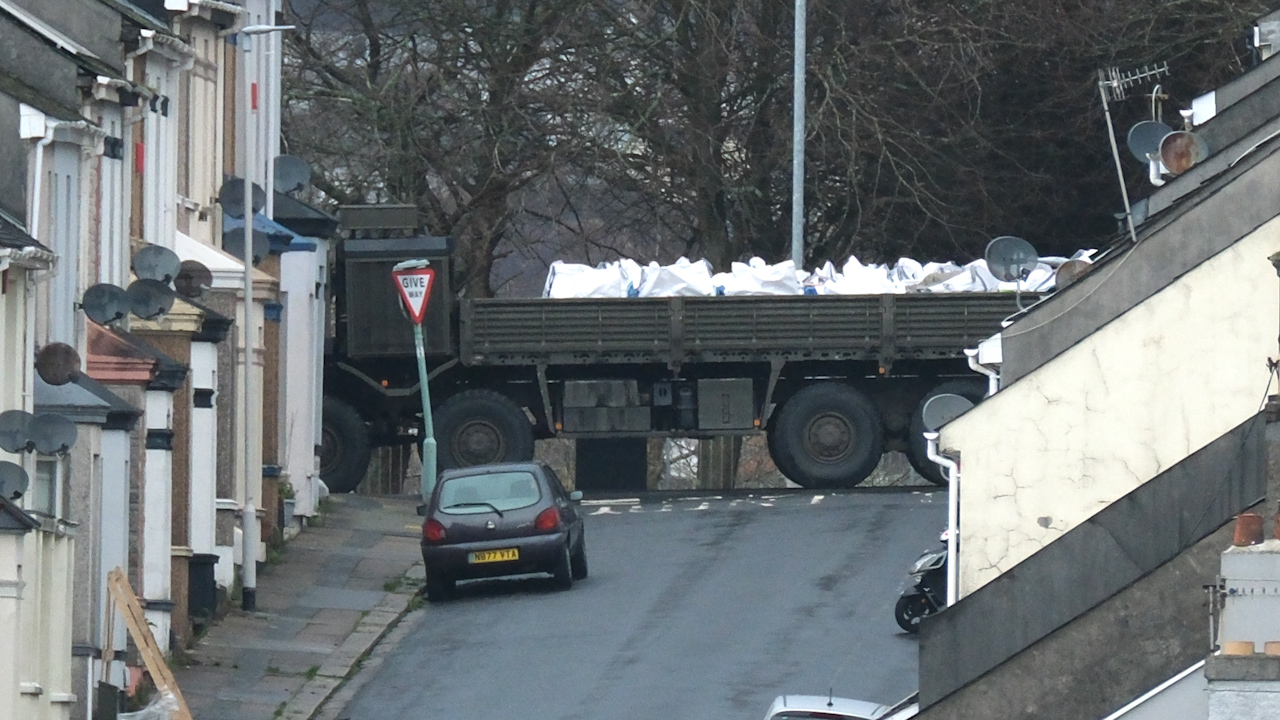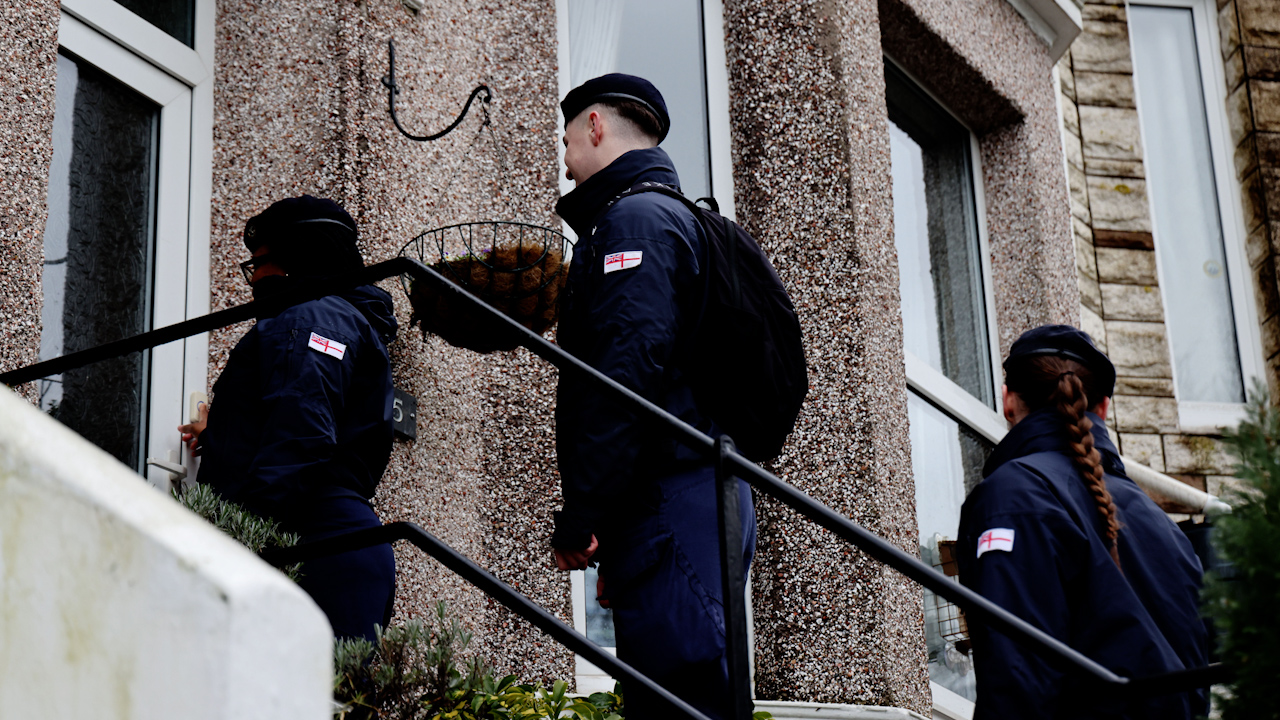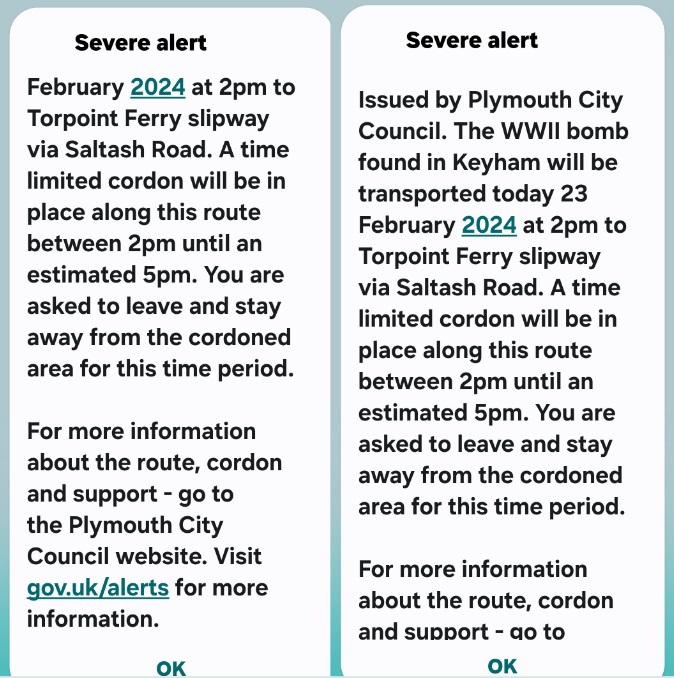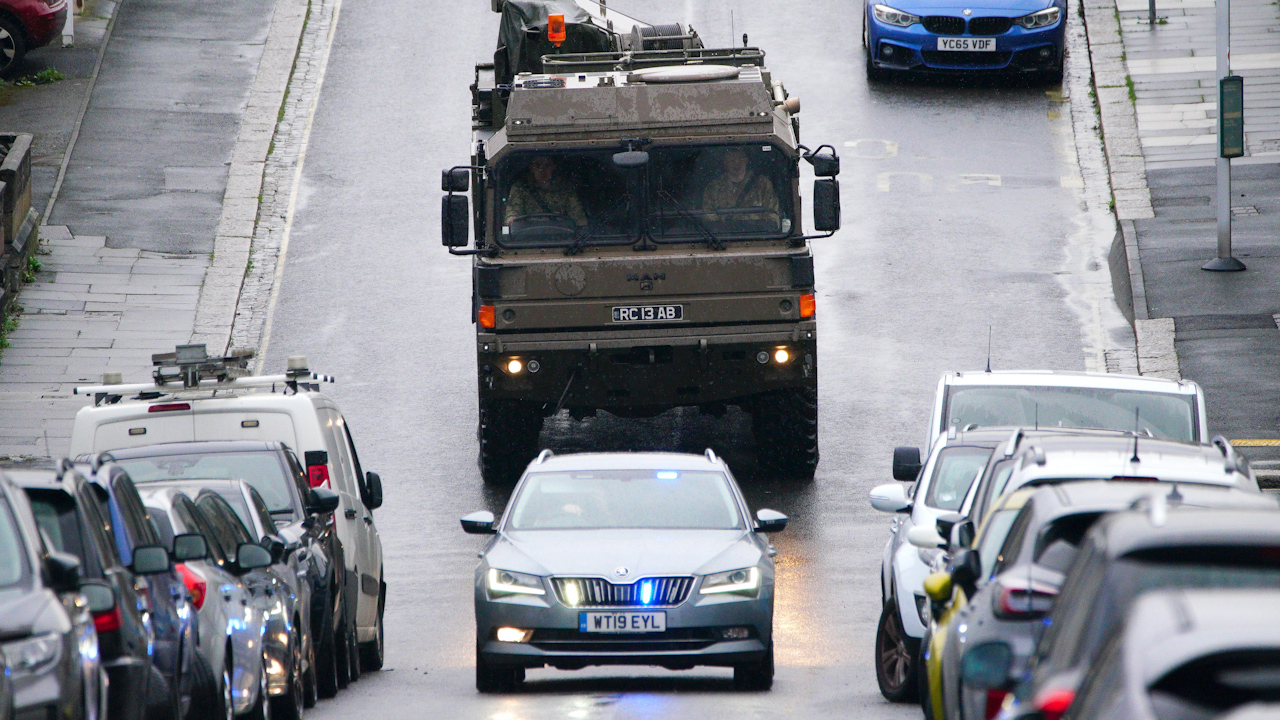
Military personnel carry Plymouth WWII bomb out to sea for detonation

A suspected Second World War unexploded 500kg bomb discovered in Plymouth has been transported to the sea for detonation by the Royal Navy.
Royal Navy bomb disposal experts were deployed alongside the police to remove the device which was found at St Michael Avenue in the Keyham area of the city on Tuesday. A convey carried the device from the town centre to a nearby ferry port at 17:00.
According to the MOD, civilians were removed earlier in the day in one of the largest UK peacetime evacuation operations since the Second World War, but can now return to their homes.
Plymouth City Council announced that the bomb would be taken by military convoy to the Torpoint Ferry slipway to be disposed of at sea.
Addressing the situation around the bomb's removal, Superintendent Phil Williams, of Devon and Cornwall Police said at a press conference at the cordon in Plymouth: "As has been the way throughout this, we’ve not forced anyone to leave their home.
"All we can do is urge them to and offer them the best possible advice that we can.
Mr Williams said the military convoy was expected to take 20 minutes to move the bomb from the garden to the sea.

Giles Perritt, assistant chief executive Plymouth City Council, said more than 1,000 staff and officers were involved in the operation to remove the bomb safely.
He said: "Today is the result of an enormous amount of planning. You won't be surprised to hear that officers and partners have been working around the clock since this incident started to come up with the best and safest solution to deal with this device.
"We're all both excited and still planning for carrying out a successful operation today.
"I believe that after an enormous amount of work, we’ve taken an approach which reduces the risk to human life and also reduces what might have been a devastating impact on properties around where the device is situated at the moment.
"I think we’ve come up with a solution that lowers the risk to the least amount. There are still risks that we face but we think we’ve managed them the best.
"I'd just at this time like to say that the colleagues from the military who will be at the wheel of that vehicle are taking risks that I think any of us would struggle to contemplate on a daily basis and my hat is absolutely off to them."

The council stated that if the bomb was detonated in the garden, there would be too high a risk of significant damage, including the destruction of houses.
Residents had been told to evacuate from the area and a 200-metre cordon was placed around the site due to safety concerns, extended to 309 metres on Thursday morning.
It is estimated that 3,250 people and 1,219 properties have been affected by the emergency, making it one of the largest peacetime evacuations since the 1940s.
The majority of unexploded ordnances (UXO) discovered around the UK are bombs from the Second World War.

A council spokeswoman said: "It is a very complex situation, and a number of factors need to be considered by the members of the resilience forum, alongside the overriding objective of people's safety, including damage to property and impact on underground utilities.
"Following more information about the device and after considering all options, including a controlled detonation on site, partners have agreed that the safest and least impactful option is to remove the device from St Michael Avenue and travel to the Torpoint Ferry slipway – for the bomb to be disposed of at sea (beyond the breakwater)."









